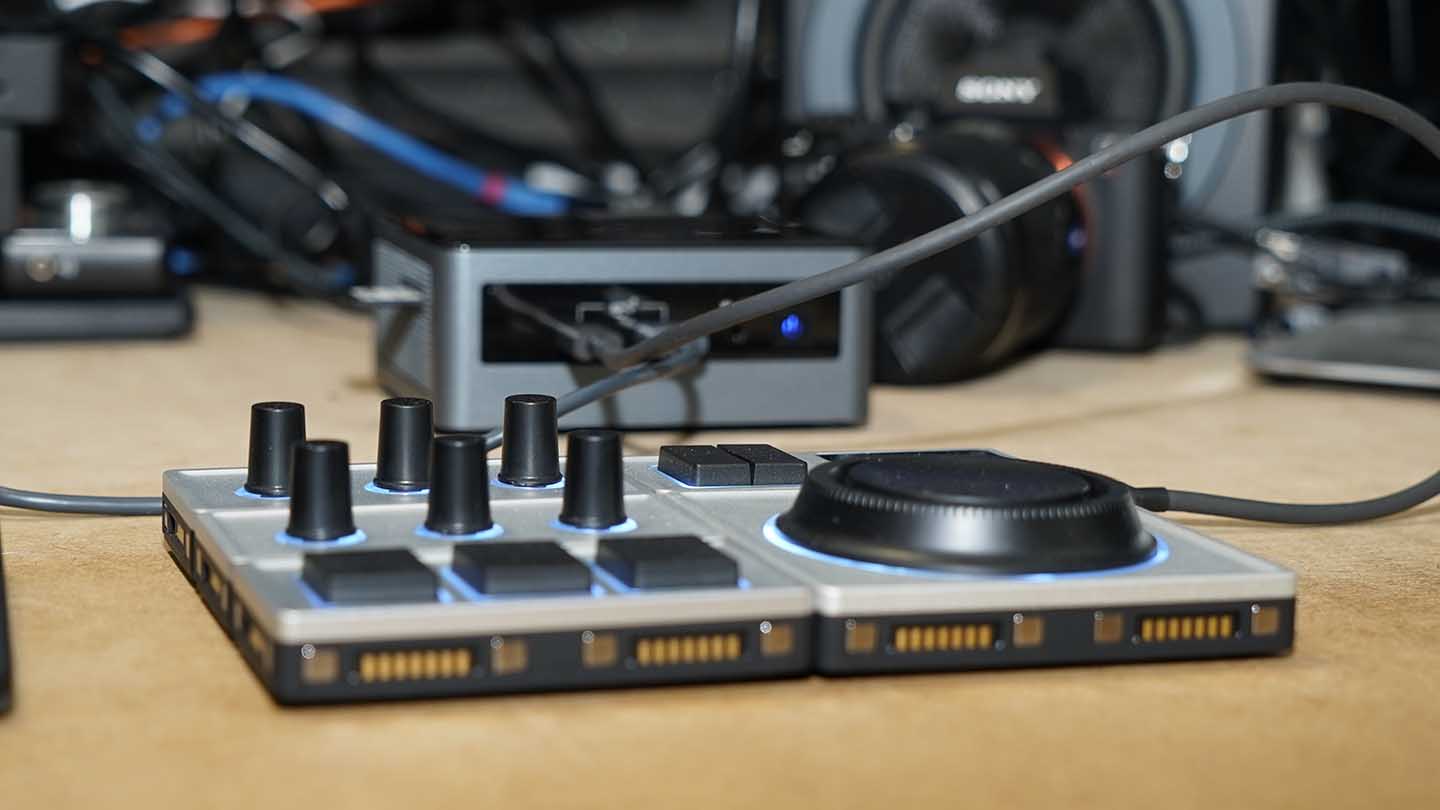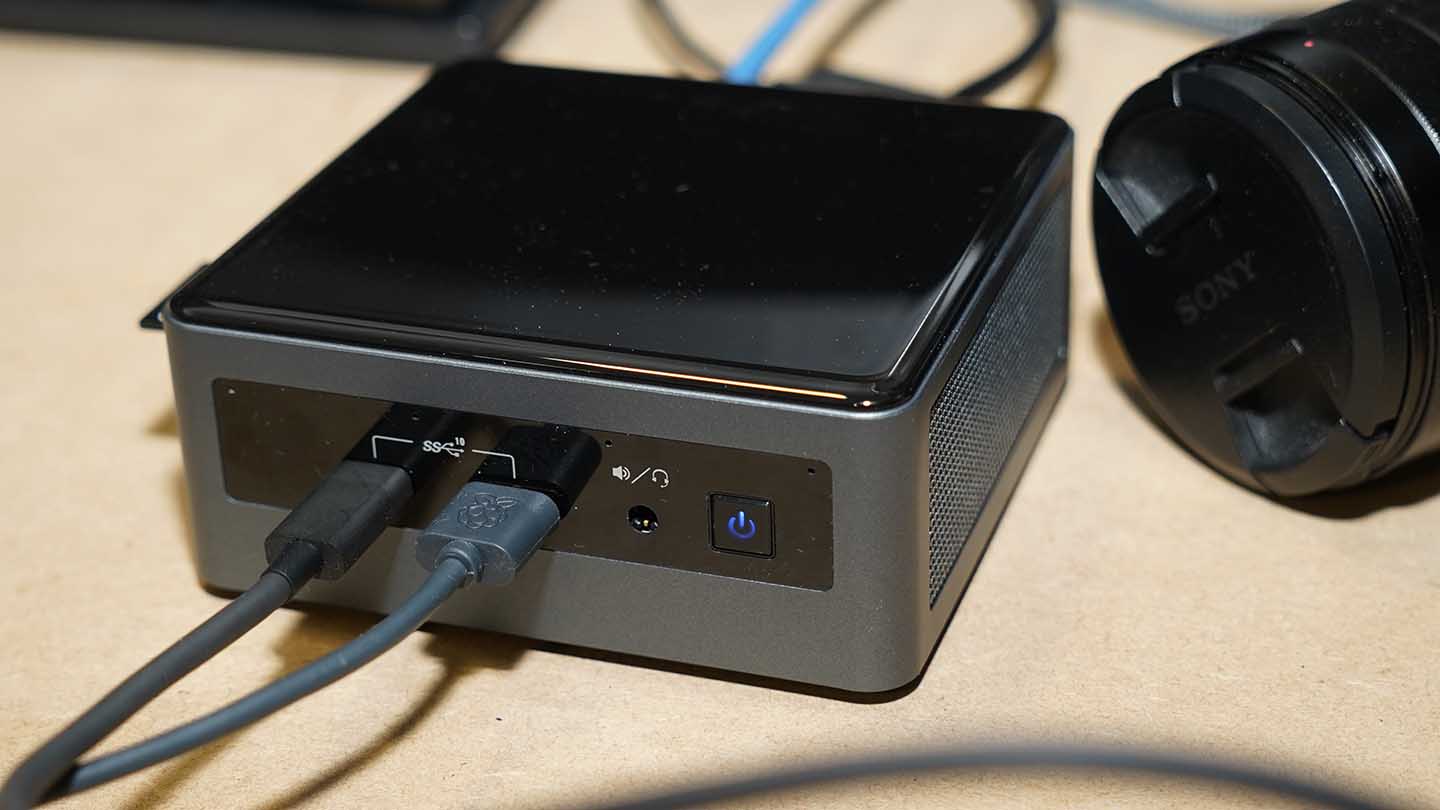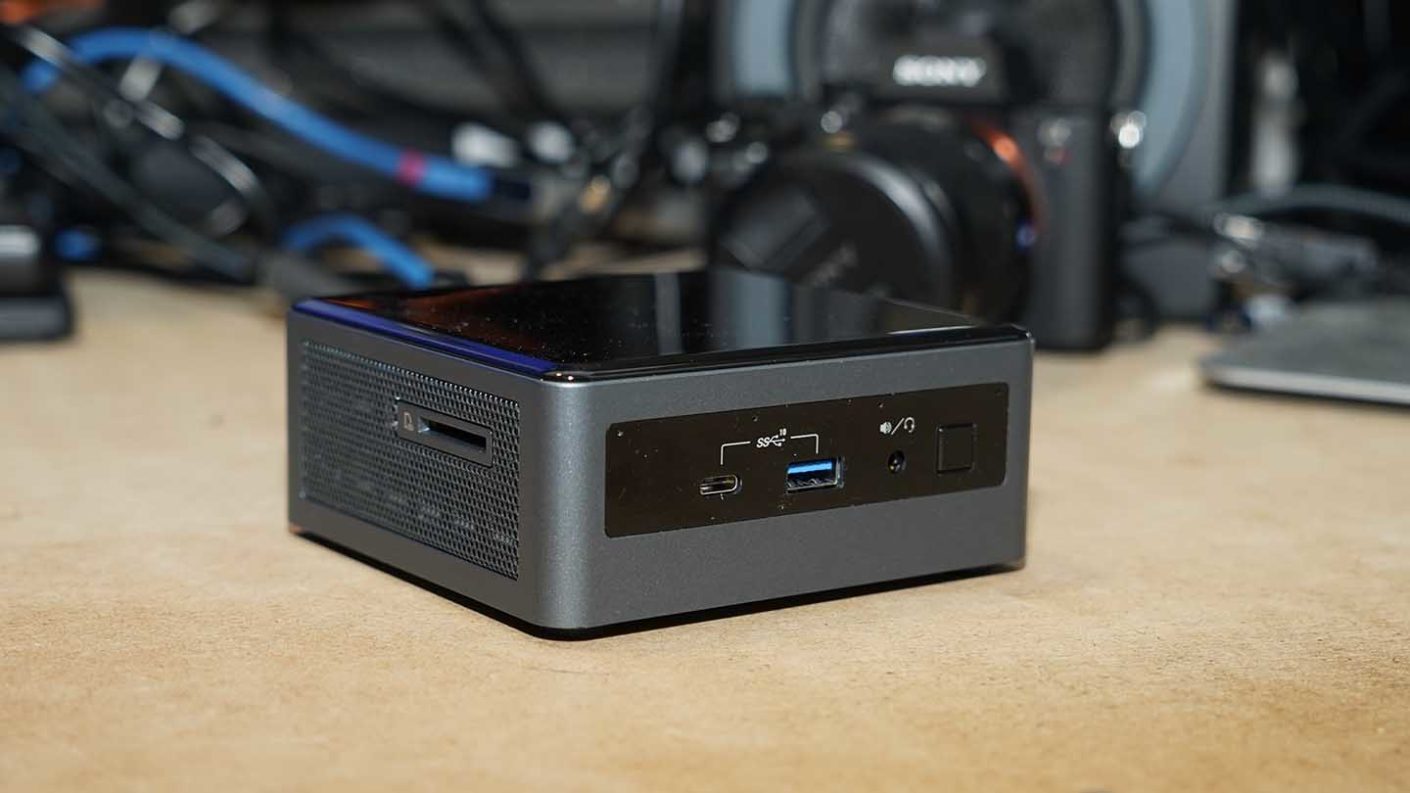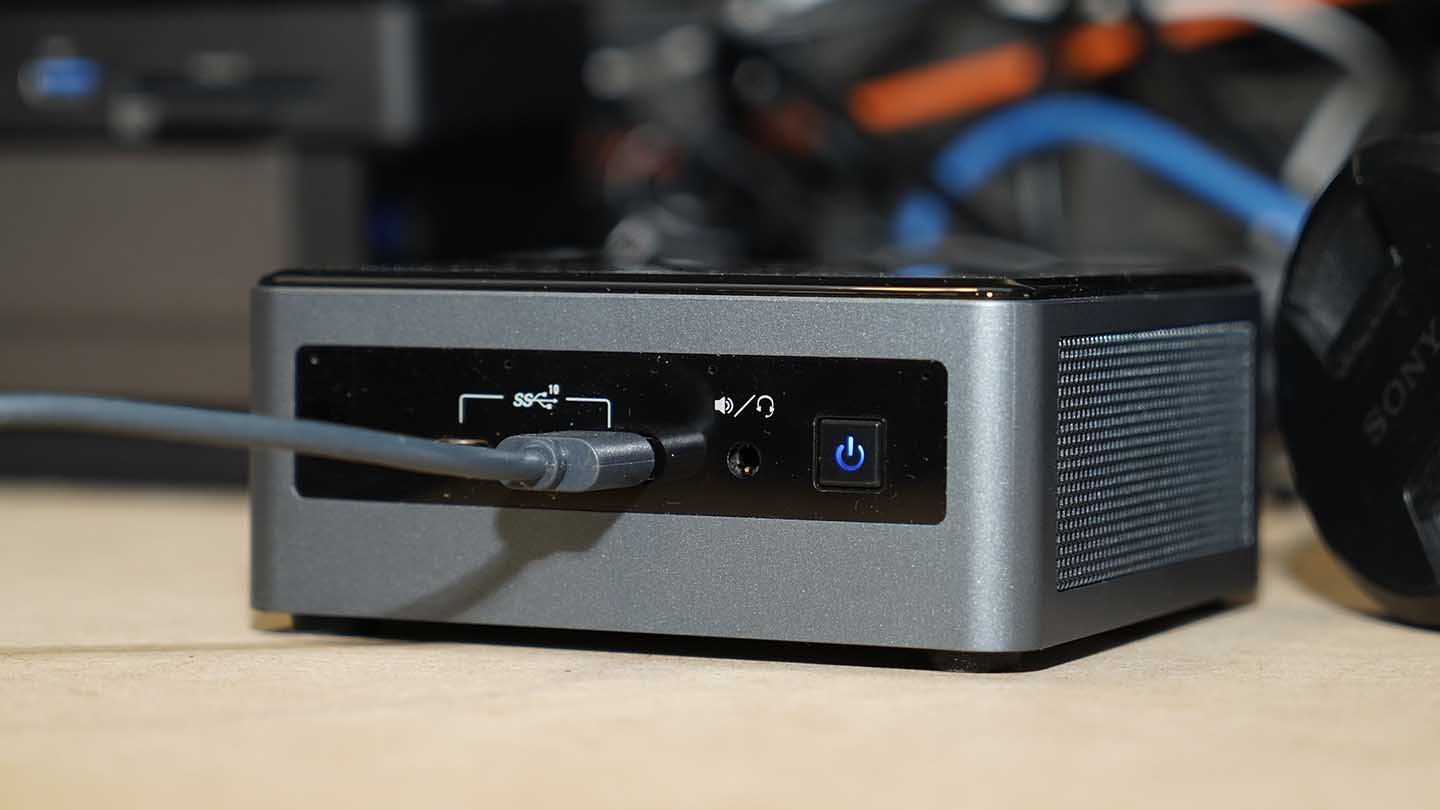The Intel NUC 10 Performance is squarely aimed at the growing creator community, and the balance of power and size all starts to make sense as you use the machine.
From the outset, it’s worth pointing out that the NUC does quite have the processing clout of a larger desktop as there are only the integrated graphics and the power supply is only 25w; however, what it can do is quite remarkable.

Powering up for the first time and its quickly evident that speedwise, this machine is faster than most full-sized PC’s that I’ve used. Programs loaded quickly, and flicking through a selection of RAW images from the Sony A7R II proved just how quick the machine is.
Before I loaded up a selection of imaging and video applications, I wanted to test the machine using a series of benchmarks, including GeekBench and AJA.
The GeekBench 5 results were impressive.
Single Core: 1237
Multi-Core: 5771
Put into context, the small i7 processor was faster than my MacBook Pro 2018 i9. Using the two side by side, the MacBook did have the edge, probably due to the graphics and 16GB of additional RAM, but not by enough margin to warrant the price difference.
Even comparing it against the NUC 9 Extreme, the pure CPU processing was exceptionally good.
Switching over to AJA to test the M.2 speed and the results. Were slightly slower than I expected at:
Read: 1257
Write: 816
Still more than fast enough for most creative uses, including 1080p and some 4K editing.
After a quick benchmark, it was time to look at the real-world test.
Loading images into the Adobe Bridge was the first real look at the computer’s performance. The thumbnails took a few moments to load, but it wasn’t as if I had time to nip out and get a coffee while the machine handled the processing. Likewise, opening ten images in ACR was fast, and making adjustments was nice and quick with little lag.
Opening several images in Photoshop and creating cutouts, applying filters and adjusting scale, the machine processed the pictures quickly with no irritating delays or slowdowns.
When it came to editing in Photoshop, the NUC 10 was as good as any machine I’ve used recently, and the lack of dedicated graphics had little effect on the speed, or the performance I needed to maintain a smooth workflow.
However, the real test would come when the machine was faced with a couple of video editors.
First up was Adobe Premiere Pro. Like Photoshop, this loaded at speed, ready for a new project.
After setting up an HD project and dragging some S-Log2 footage, the NUC 10 handled the edits and application of Bouncecolor LUTs without issue.
I steadily increased the amounts of edits and transitions to create a short five-minute video to test the speed and features, and the results were impressive. The workflow was smooth, and editing, dragging, and dropping clips were well within the machine’s abilities.
Rendering out the final jumble of video and the render times for a two-minute video was longer than expected at 3 minutes and 32 seconds.
Next up was to create the same project in DaVinci Resolve and again edits, and the handling of footage was all smooth enough. When its camera to the export it took 4 minutes and 52 seconds.
Moving on to 4K in both applications and again with S-Log2 footage shot on the Sony A7R II and A7 III. Initial edits are again impressively smooth, but as transitions and effects are applied, you can start to see a little slow down as the graphics processing comes under strain.
However, the small machine handles the relatively short two and five-minute edits without too much issue. Above that length and you are starting to push the machine’s abilities without the addition of an eGPU.
One of the main advantages of this small machine is just how expandable it is; there’s plenty of space to max out the internal storage with a Lexar 4TB Samsung 870 EVO for the mass storage and a 1TB Lexar NM700 M.2 for the fast base system.
For the graphics processing, you can give it a boost with an eGPU, and as this is for video and photography, you don’t need the huge expensive eGPU’s required for gaming data mining.
Looking at eGPU prices, you can now get a decent set-up for around £400-500. This does obviously bounce up the price of the NUC considerably.








